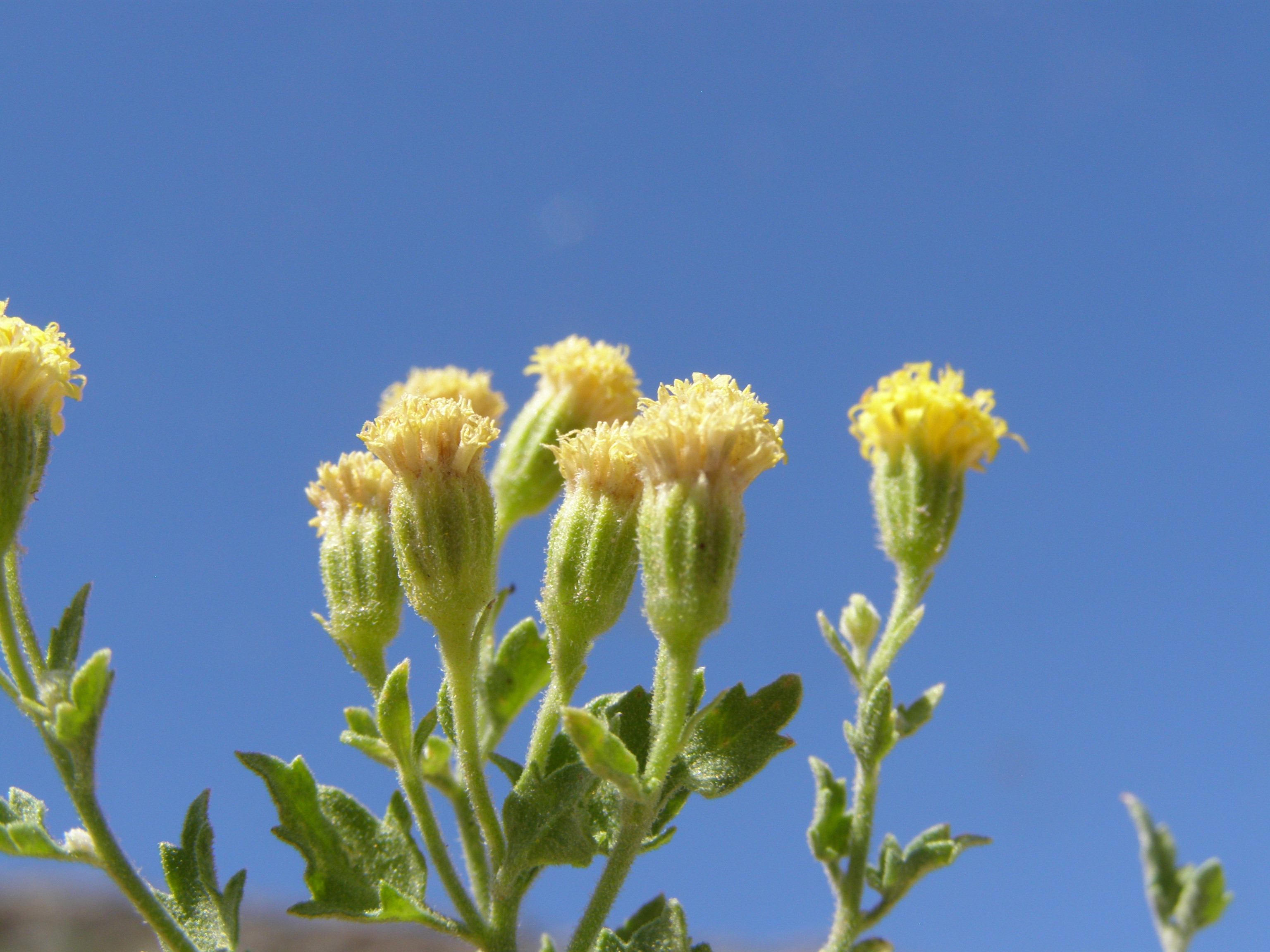
|
Family: Asteraceae |
Annuals, perennials, subshrubs, or shrubs, 2-45(-75) cm (glabrous or hairy, often gland-dotted). Stems erect to pendent. Leaves mostly cauline; often proximally opposite, distally alternate; petiolate or sessile; blades usually 3-lobed, ultimate margins entire, toothed, or lobed. Heads radiate or discoid, borne singly or in corymbiform arrays. Involucres campanulate, cylindric, funnelform, or hemispheric, 3-15 mm diam. Phyllaries persistent, 5-28 in (1-)2(-3) series (distinct, linear to ovate, equal or subequal, flat or keeled, glabrous or hairy, apices obtuse, acute, or attenuate). Receptacles flat or convex, pitted, epaleate. Ray florets 0, or (1-)3-18, pistillate, fertile; corollas cream, yellow, or white (showy or rudimentary). Disc florets 5-200, bisexual, fertile; corollas cream, yellow, or white, tubes shorter than or nearly equal to cylindric, funnelform, or campanulate throats, lobes 4, ± deltate (acute; stamens 4; style branches flattened, linear, usually tapering to fine, minutely hairy tips). Cypselae (black) flattened to subcylindric, linear to oblanceolate or obovate (margins ± calloused and glabrous, hairy, or ciliate, faces usually hairy, sometimes glabrous); pappi 0, or persistent or falling, of 1-35 bristles plus callous crowns or hyaline scales. x = 17, 19. Most species of Perityle are rock-dwelling subshrubs exhibiting geographic speciation; most are found in the eroded mountain and basin region of the southwestern United States.
|
This project was made possible in part by the Institute of Museum and Library Services [MG-70-19-0057-19].
Powered by Symbiota



